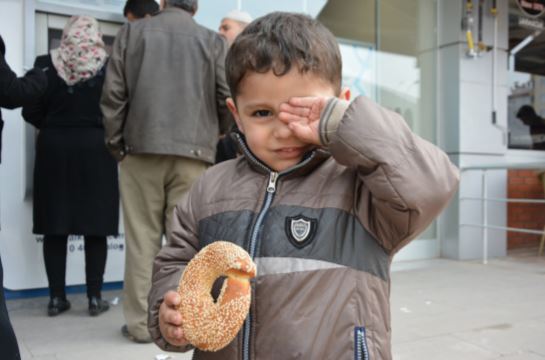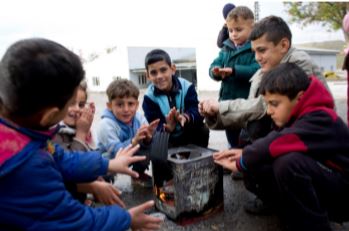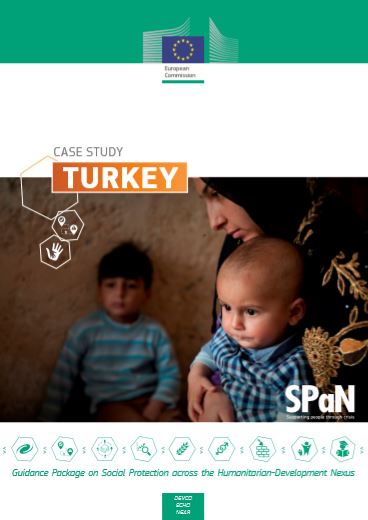SPaN (2019) Case Study: Turkey

This Case Study on Turkey summarizes the context and main features of the process of piggybacking (ex post) of humanitarian assistance and national systems to respond to the high number of forcibly displaced people in the country.
In 2017 there were 3.3 million registered refugees in Turkey, of which approximately 3.1 million were Syrians. In May 2017, 64.2% of refugees were estimated to be living below the Turkish poverty line. From January 2016, formally registered Syrian refugees could apply for work permits. However as of September 2017 only approximately 26 000 had been issued - less than 4% of the refugee population.
The Turkish Government has played a central role in supporting the refugee crisis, contributing with financial resources and with a more enabling regulatory environment to increace refugee´s access to public services and durable solutions. International funding from a range of bilateral and multilateral sources has increased, with the EU and US consistently the major donors.
Case Study Turkey (PDF)
Cash transfer programmes (CTP) have been part of the response since 2012. As the refugee situation became protracted, response plans transitioned to provide increased support to national systems. The Facility for the Refugees in Turkey (FRiT) was established to address both humanitarian and longer-term development needs of refugees and host communities.
ECHO’s Humanitarian Implementation Plan (HIP) 2016 committed EUR 348 million to establishing an Emergency Social Safety Net (ESSN), to provide longer term cash transfers to refugees and increase their selfreliance. Another priority was improving access to quality education through increasing enrolment and attendance. The ESSN supports registered Syrian and non-Syrian refugees living outside camps in Turkey, providing monthly basic needs assistance to over one million refugees.
|
This case study is divided into three parts: Scene setting What it looks like How it was done |
At the same time, the Turkish Government was interested in expanding cash assistance to Syrians by using the Turkish social protection system. Already well established and with a range of cash based social transfers managed by the Ministry of Family and Social Policies (MoFSP), it is administered through 1001 Social Assistance and Solidarity Foundations (SASF) in each province and district centre. The flagship programme is the Conditional Cash Transfer for Education (CCTE) which reached almost 2.35 million children in 2014.

The ESSN and CCTE for Refugees are build on the existing administrative processes, systems and institutions used to provide social transfers to Turkish citizens. generates efficiencies compared to establishing a parallel system. This approach provides a faster and more effective response through methods that end beneficiaries are familiar with, saving time and costs. Where necessary, processes have been adapted for the requirements of delivering humanitarian cash assistance at scale.
CCTE payments are conditional upon 80% school attendance, monitored through a partnership between MoFSP and the Ministry of National Education. The CCTE for Refugees includes a complementary child protection monitoring and case management component that aims to sustain education outcomes and mitigate child protection risks. Outreach teams conduct household monitoring visits to children whose attendance drops or is at risk of dropping.
A major challenge has been the Turkish Government’s restrictions on international agencies accessing data on refugees and ESSN/CCTE beneficiaries, due to data privacy legislation. This has proved challenging for humanitarian agencies reliant on a small sample of anonymous data in ensuring accurate targeting, which has compromised the programme’s accountability.
The Turkey case study was produced as part of the “Guidance Package on Social Protection across the Humanitarian-Development Nexus” (SPaN). Visit the Guidance Package´s community page for a full list of SPaN´s studies.

Log in with your EU Login account to post or comment on the platform.